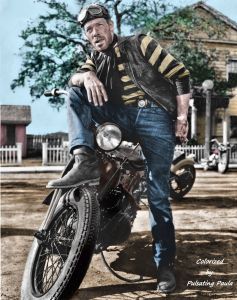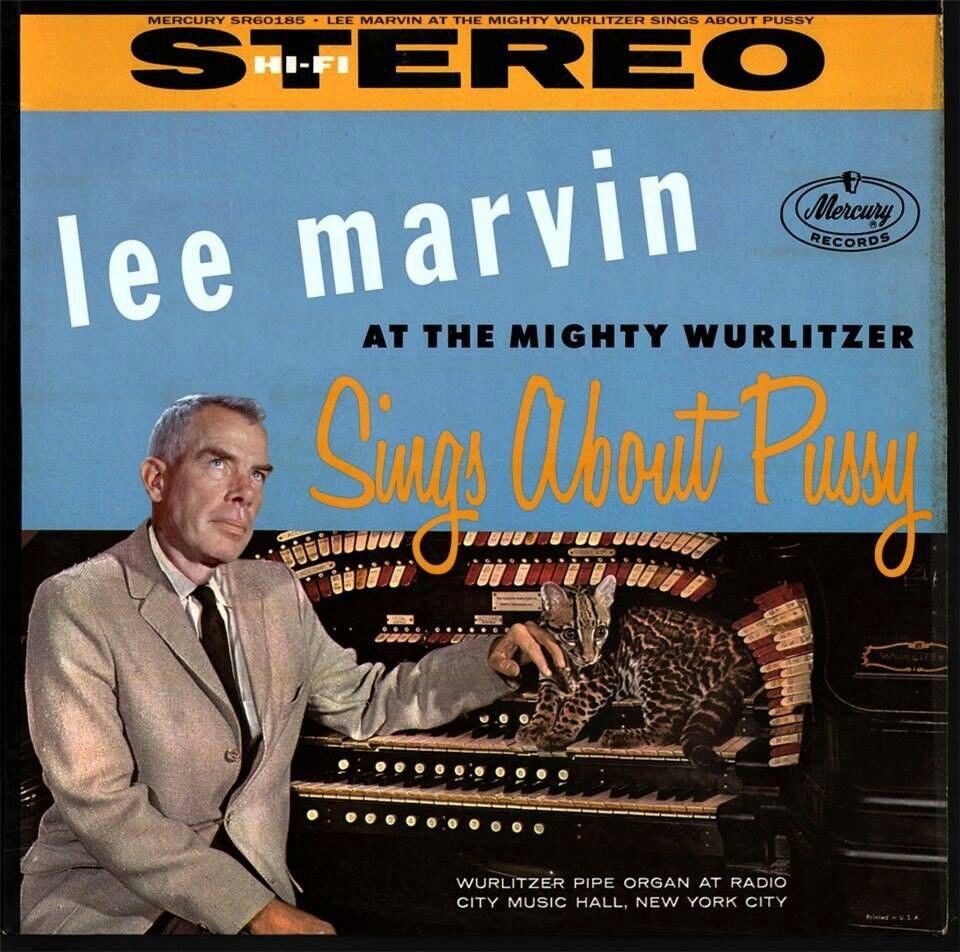
I dunno exactly what Ee-Ooo is, but this song-n-dance number, so-titled, from 1958’s How to Make a Monster, says you gotta have it.
How to Make a Monster is not so much about how to get Ee-Ooo—it’s not even about song-n-dance—but about what happens if you haven’t got it. Ee-Ooo, that is. And its deprivation can be awfully monstrous indeed.

A schlockily entertaining look at movie monster makeup and the process of monster make-upping, How to Make a Monster shows not only how to make a monster, but what happens to a monster maker who’s told he no longer can. For twenty-five years, loyal, hardworking Pete has been the chief monster-makeup artist at low-budget American International Studios. His films have made the studio pots of money; and for him, his monsters are not product but creations—his works of art. Only now, during his proudest moment, when his two signature monsters—the Teenage Werewolf and the Teenage Frankenstein—are starring together in a new film, he’s told the studio’s been bought by an outside corporation that now intends to produce cheesy teen musicals instead of cheesy teen monster pics (the writhingly amusing Ee-Ooo number being a dubious sample). People want to be happy!, says one cold-blooded head-capper, not scared. Which means Pete’s makeup department is to be shut down. Which means loyal, hardworking Pete is out on his ass.


To which sad fate of Pete’s one brassy member of the new top brass merely says, “That’s the way the footage cuts.” Never thinking, of course, that one day the footage might cut him.

As the great Rick Baker, commenting on the film’s trailer, says, How to Make a Monster is “a tragic story.” Underneath its surface schlock is, at heart, a hard-nosed look at how a ruthless capitalist system uses, then discards its workers like so many emptied tubes of makeup. Pete has no power, no influence, no say in what’s being done to him. He’s told that, as with the car replacing the horse and buggy and the freezer the icebox, he’s no longer needed or worthy of thought. “It’s progress,” says a corporate slayer, adding how nice he’s being to Pete by dismissing him in person and not via a pink-slip. (The day AI slips those pinks to CEOs—because of “progress”—I wanna be there.)
But for Pete, this is more than a dismissal. He’s an artist being deprived of his art; as well as a worker of his work, income, opportunities—his life. Only Pete doesn’t intend to go gentle into that unemployment line. Oh no, he’s gonna show the new bosses their studio’s not yet done with Monsters. Even if it takes a real Werewolf and Frankenstein to do so. And if his solution is ultimately to close down the studio—in essence, shutting down the system—I for my part want to be on those barricades with him.


Produced by low-budget American International Pictures—which, oddly enough, inserts itself into the film as its fictional low-budget studio counterpart—How To Make a Monster is said to be based on the life of Jack Pierce, Universal Studios’ legendary makeup artist, famous for creating the faces of the Frankenstein Monster, the Mummy, and the Wolfman. As the story goes, the touchy, irascible Pierce clung to old ways of monster making, lathering layers of collodion, cotton, spirit gum, and yak hair onto the patient, bruised flesh of such actors as Boris Karloff and Lon Chaney, Jr., rather than fashioning modern, and reusable foam latex appliances. Since Pierce’s techniques were expensive and time-consuming, he was thus priced out of the market, unable or unwilling to keep up with new methods and cost-cutting budgets. An artist incapable of adapting to new ways, he was shoved out by an industry he helped create.

Per Pierce’s Wikipedia bio, however, Pierce did use latex face pieces and such, having his assistants craft these reusable devices (Pierce oversaw Universal’s entire makeup department, not just its horror films). But in 1946 Universal, after a series of buyouts and mergers…(oh, really?), became Universal International and reorganized its structure. One reorganizational result was the hiring of the more personable Bud Westmore, of the Westmore makeup clan, to more personably head the studio’s makeup department. Which left loyal, hardworking Jack Pierce, who had made the studio pots of money, but who had no Universal contract (and thus no protection or leverage), out on his ass. That being, as per a previously quoted cinematic buyer-outer, the way the footage cuts.

The film’s muted irony is that AIP, meaning the real AIP, not the fictional film one, in no way was intending to shut down its, if you will, monster department. Throughout the 1960s it continued in the monster/horror genre, distributing Roger Corman’s successful ‘Poe’ movie cycle, as well as importing such notable classics as Mario Bava’s Black Sunday. AIP’s horror self-referencing was also weaved throughout How to Make a Monster, inserting its previously filmed Teenage Werewolf and Frankenstein (even recreating the same makeup from those earlier films), while adding a plug for its soon-to-be-produced-and-distributed Horrors of the Black Museum (whose producer, Herman Cohen, was the same as for How to Make a Monster). Per IMDB and BFI, Horrors cost between $150,000 and $400,000 to make but grossed over $3 million. With that kind of dough Ee-Oooing studio coffers, the real horror would have been to pink-slip such a lucrative genre.


A further irony is that Monsters are still a big part of Movies—horror could even be said to dominate today’s film output—whereas producers no longer make musicals. Indeed, by the 1960s the musical genre, once an adored staple of Hollywood, was already starting to die off, collapsing, by the early 1970s, with such monstrous white elephants as Hello Dolly, Dr. Dolittle, and Lost Horizon. So maybe old Pete does sort of get his revenge. Movies still need monsters and thus the people who can make them.
Yet, while monster flicks are going great—big money, big FX, big stars, big publicity noise—young’uns today don’t even know what a musical is (is an Oscar even presented any more for best song? Someone please enlighten me…). To which one might ask: Where does that leave all those dancers, composers, choreographers, and singers who once formed such a vital part of what we once thought of as the golden age of Hollywood? Or has the footage been cut that way for them, too?
Like (with a sigh) the movies say…you gotta have Ee-Ooo. Whatever it is.

Bonus Clip: Here’s Rick Baker on Trailers From Hell, commenting on the trailer for 1958’s How to Make a Monster, which “I thought was a documentary”:
You can watch How to Make a Monster on YouTube here, while available. It’s also free on Tubi (login required).
As Rick Baker notes above, in the film’s color finale you can see Paul Blaisdell’s mask for the She-Creature from the film The She-Creature (which I wrote about here), as well as the mask for darling Beulah, the ‘It’ from It Conquered the World (which I wrote about here). Plus there’s the lettuce-headed mask from the amazing Invasion of the Saucer Men.






Lloyd Daub
/ June 27, 2024No Best Song any more? Of course there’s still an Oscar for that.
https://acousticmusic.org/research/history/list-of-academy-awards-for-songs/
Alas this list does not include the last two winners. You need Wikipedia for that 🙂
https://awardsdatabase.oscars.org/search/results
If I did it right, this is the Academy’s own database for just this century.
Grand Old Movies
/ June 27, 2024Good to know some things last – thanks!